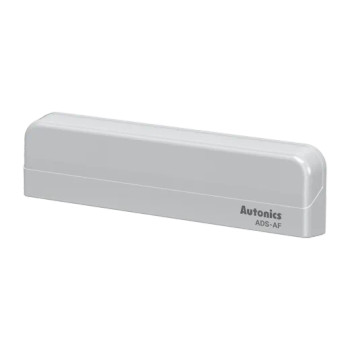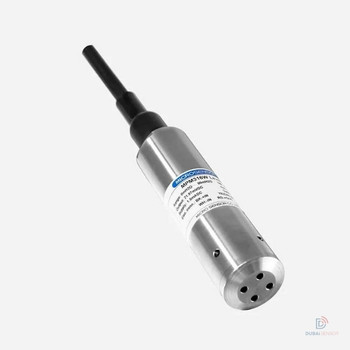Description
Product Overview
The BWM Series mapping sensors are designed to provide optimal detection of ultra-thin glass substrates, even in conditions with low light reflection. By employing a patented double scan method, these sensors offer superior accuracy and reliability. Installation is straightforward, thanks to a range of user-friendly features, including the ability to adjust light reception levels, which helps to minimize the impact of diffused reflection. The BWM Series sensors are compatible with both CC-Link and EtherCAT communication protocols, making them versatile and suitable for various industrial applications.
Key Features
- Advanced Glass Detection: The double scan method ensures stable and accurate detection of glass substrates, enhancing performance in challenging conditions.
- Customizable Design: Available with 4 to 62 sensing channels and optical axis pitches ranging from 25 to 200 mm, the BWM Series can be tailored to meet specific application needs.
- EtherCAT and CC-Link Communication: Supports both EtherCAT and CC-Link protocols, ensuring seamless integration with various automation systems.
- User-Friendly Installation: The sensors come with an installation instruction mode that simplifies setup and configuration.
- Interference Prevention: Equipped with mutual interference prevention features, these sensors maintain accuracy even when multiple units are installed close together.
- Built-In Alarms: Includes bent optical axis alarms, 9-stage sensing level settings, and emitter error alarms to provide comprehensive operational feedback.
- Visual Indicators: Bright status indicators on slave units make it easy to monitor the sensor's operational status.
Safety Considerations
For safe and proper operation, it is crucial to observe all safety considerations. When using the sensors in environments where failure could result in significant injury or economic loss, a fail-safe device must be installed. The sensors should not be used in locations where flammable or explosive gases are present, or in conditions with high humidity or direct sunlight. Additionally, users should avoid disassembling or modifying the sensors to prevent fire hazards or equipment malfunction.
Installation and Adjustment
Installing the BWM Series sensors is a straightforward process, designed to ensure accuracy and ease of use. Proper alignment of the Master and Slave units is essential for optimal performance. The installation guide mode assists in aligning the optical axes of all channels. The sensors should be placed away from direct fluorescent lighting and any sources of strong electromagnetic interference. Once aligned, the units can be secured in place, ensuring stable and reliable operation.
Communication Interface
The BWM Series supports EtherCAT communication, utilizing a 100BASE-TX physical layer and operating at 100 Mbps. The sensors are connected in a daisy chain configuration, with an address range of 0 to 65535, set via software. This interface allows for efficient data transmission and easy integration into existing systems.
Operation and Functionality
Operation Modes
The BWM Series sensors operate in either Light ON or Dark ON modes. These modes provide flexibility depending on the application, with clear indicators showing the stability of light reception and highlighting any issues such as teaching errors.
Key Functions
- Installation Guide Mode: Assists in the precise alignment of the sensors during setup.
- Sensing Level Setting: Adjusts sensitivity across 9 levels to accommodate variations in the sensing environment, ensuring reliable detection.
- Mutual Interference Prevention: Allows multiple sensors to operate in close proximity without interference by adjusting transmission frequencies.
- Optical Axis Misalignment Alarm: Detects and alerts when the emitted light level drops, which may indicate sensor misalignment or wear over time.
- Emitter Damage Alarm: Notifies users when the emitter is damaged due to long-term use or physical impact.
- Self-Diagnosis: Periodically checks the sensor’s operation, displaying any errors to ensure continuous reliability.
Troubleshooting
Common issues with the BWM Series sensors can often be resolved with simple troubleshooting steps. If the sensor fails to operate, check the power supply and wiring connections. For intermittent operation, ensure the sensor cover is clean and the connectors are securely attached. If the sensor outputs incorrectly without a target, reset the initial sensitivity settings and verify there is no strong electromagnetic interference nearby.
Documents
Can't find the information you need? Our datasheets have all the details. Access them here:
Additional Information
Sensing Method: |
Through-beam |
Beam Pattern: |
Double scan type |
Light Source: |
Infrared LED (850 nm) |
Sensing Distance: |
Glass G size + 30% |
Sensing Channels: |
4 to 62 channels |
Optical Axis Pitch: |
25 to 200 mm |
Response Time: |
≤ 120 ms |
Operation Modes: |
Light ON / Dark ON |
Power Supply: |
24 VDC |
Current Consumption: |
Master: ≤ 200 mA, Slave: ≤ 150 mA |
Protection Circuits: |
Reverse power protection, output short overcurrent protection |
Vibration Resistance: |
1.5 mm double amplitude at 10 to 55 Hz |
Shock Resistance: |
210 m/s² (≈ 21 G) |
Ambient Temperature: |
15 to 35 °C |
Ambient Humidity: |
35 to 85% |










